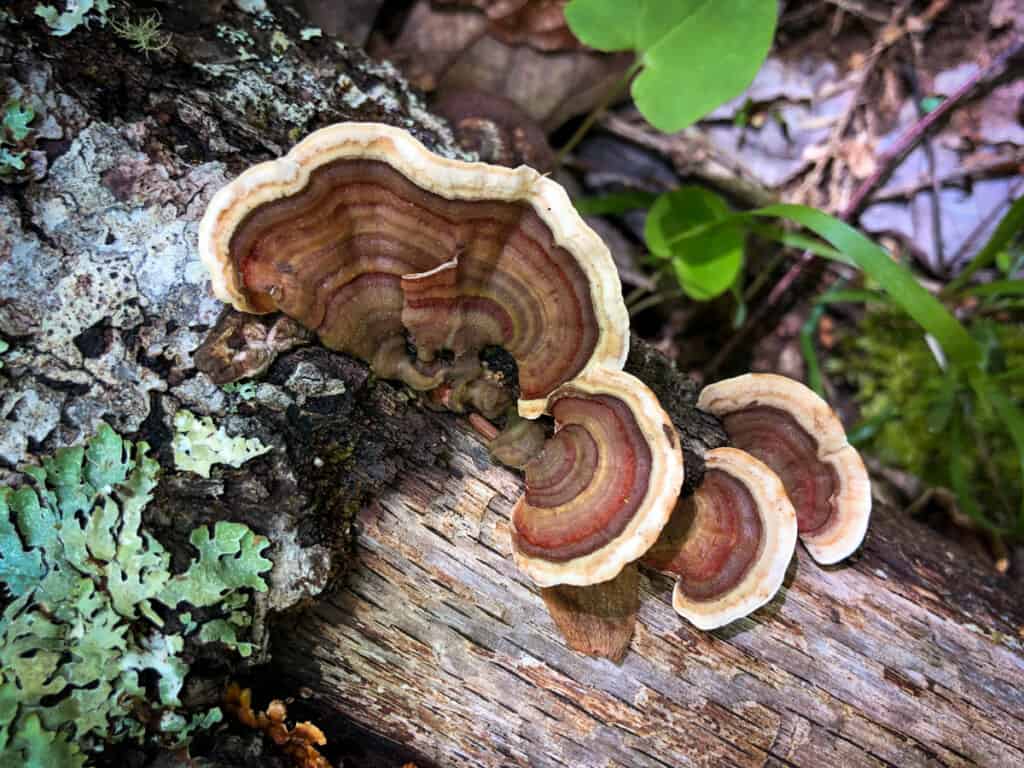
Turkey Tail Mushrooms The Sophisticated Caveman
Turkey Tail (Trametes versicolor, or Coriolus versicolor and Polyporus versicolor), also known as the "Cloud Mushroom", is a type of polypore mushroom that is found all over the world. It is highly regarded for its antioxidant properties, which have been found to have anticancer effects, similar to many other medicinal mushrooms.
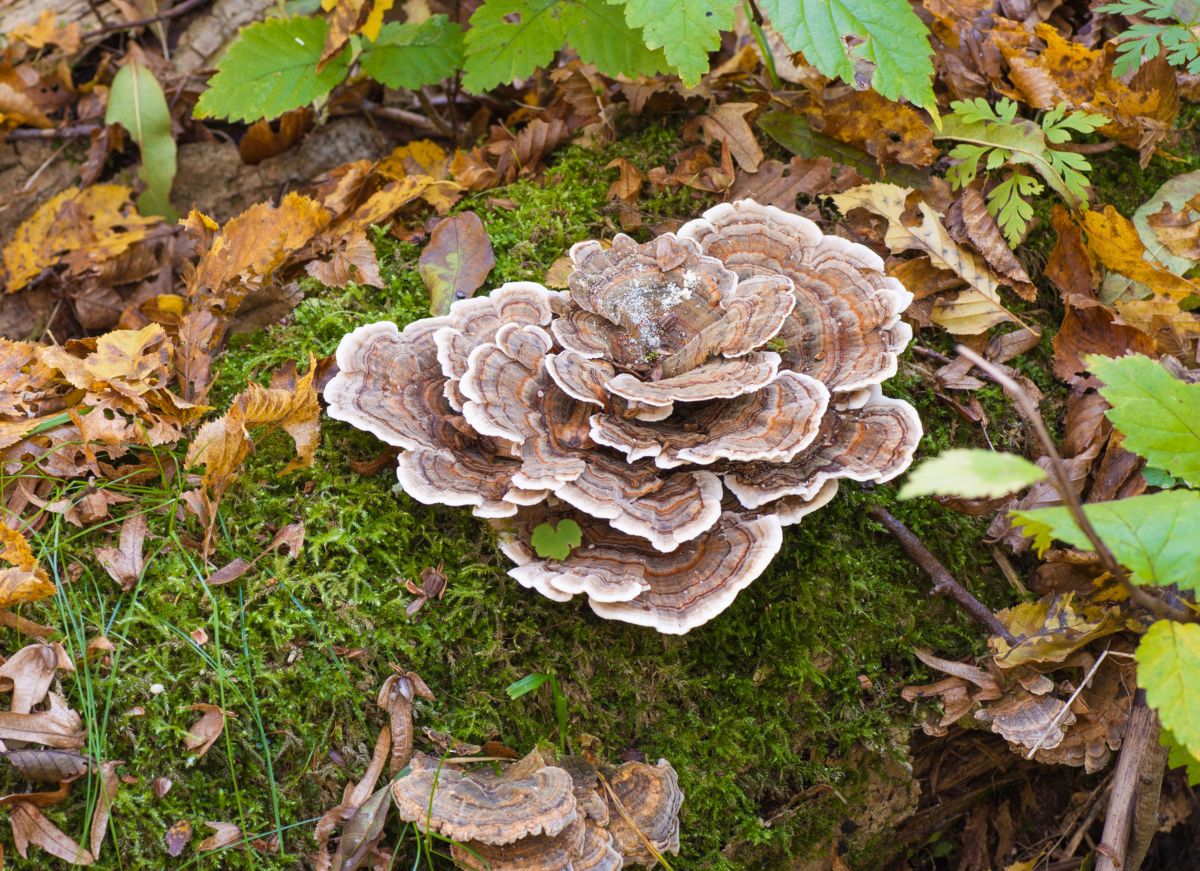
A Complete Guide to Turkey Tail Mushrooms GroCycle
Dosages vary widely in studies exploring the benefits of turkey tail extracts and supplements. For example, studies examining turkey tail as an adjuvant therapy for cancer have used 3-9 grams per dose. Many turkey tail supplement manufacturers recommend starting with 1-3 grams daily to support overall health.

Our fave Turkey Tail (Trametes versicolor) is one of the most popular
Turkey Tail (Trametes versicolor), is commonly found on trees and logs in Ontario. It's packed with antioxidants which makes it a great support for heart health and for fighting inflammation. It's also known to improve the function of the immune system, and may enhance certain cancer treatments. It

How To Grow Turkey Tail Mushrooms[Easy Way] Star Mushroom Farms
Turkey Tail is a type of polypore mushroom that often grows on dead branches and stumps of hardwood trees. It's a thin, rubbery, and semicircular mushroom with sometimes colorful striations on the upper surface. It is usually only 3-6 cm in width and forms longitudinal clusters and sometimes flower-like rosettes.

Turkey Tail Mushroom Where To Buy It, How To Use It & More
Habitat Turkey tails grows on dead, deciduous wood, in the wounds of living hardwood trees, and on conifers throughout Canada, the U.S., and in many countries worldwide. Spore Print The spore surface (and spores) are white. Season In the northern hemisphere, turkey tail fruiting season is typically May through December.

Turkey Tail a Powerful Medicinal Fungus, and Some LookAlikes to Avoid
by Michael Kuo. Trametes versicolor, often called the "turkey tail," has the dubious distinction of being the only member of the forest fungal fowl community not named for the full bird, but a feathery fraction. However, the chicken of the woods and the hen of the woods look nothing at all like chickens or hens, while the turkey tail does look.
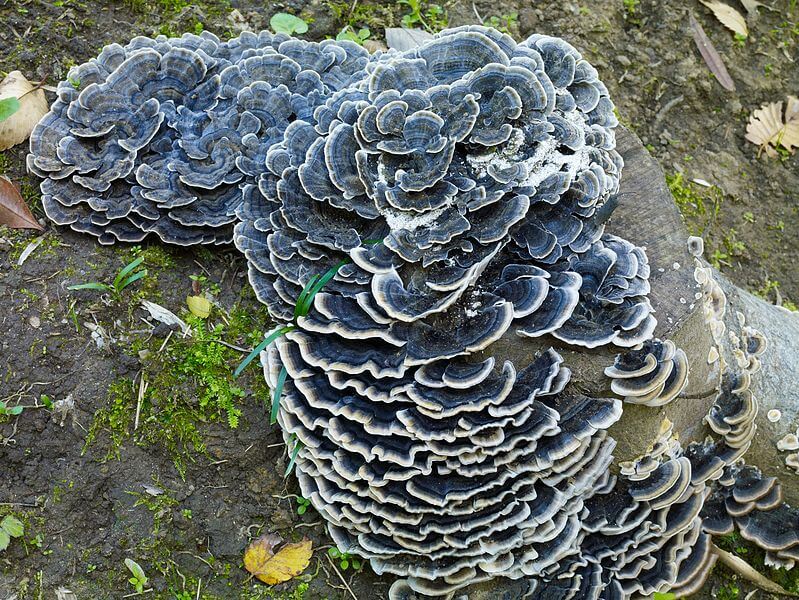
Turkey Tail, A Powerful Medicinal Mushroom Eat The
Swanson Vitamins. A healthy obsession with total wellness. Find what you need with our wide selection of brands and formulations.

The Turkey Tail Mushroom a thousand year story Mecklenburgh Square
A true turkey tail fungus has visible pores on its white underside, hence why it is classified as a polypore (i.e. many pored) mushroom. Whereas, S. ostrea and S. hirstum have yellow, smooth undersides. You will also commonly find S. ostrea mushrooms with algae on them ( 1 ). Turkey Tail Mushroom Identification Checklist

Turkey Tail Mushrooms A Simple Identification Technique for Beginning
The frequently encountered Turkey Tail gets its name from the concentric zones of colour, similar to the pattern on a turkey's tail feathers. These zones can be white, brown, reddish-brown, cinnamon, buff, orange, green, blue, and grey. That's where this colourful mushroom gets its species name, versicolor (Latin for "varied colour").

How To Grow Turkey Tail Mushrooms[Easy Way] Star Mushroom Farms
#1. Turkey-tail Mushroom Trametes versicolor Identifying Characteristics: Caps are up to 8 cm (3 in) long and 5 cm (2 in) wide. Rings of different colors decorate the tops, ranging from black to shades of brown and white. They often grow in a stacked pattern, which makes them look like roof tiles.
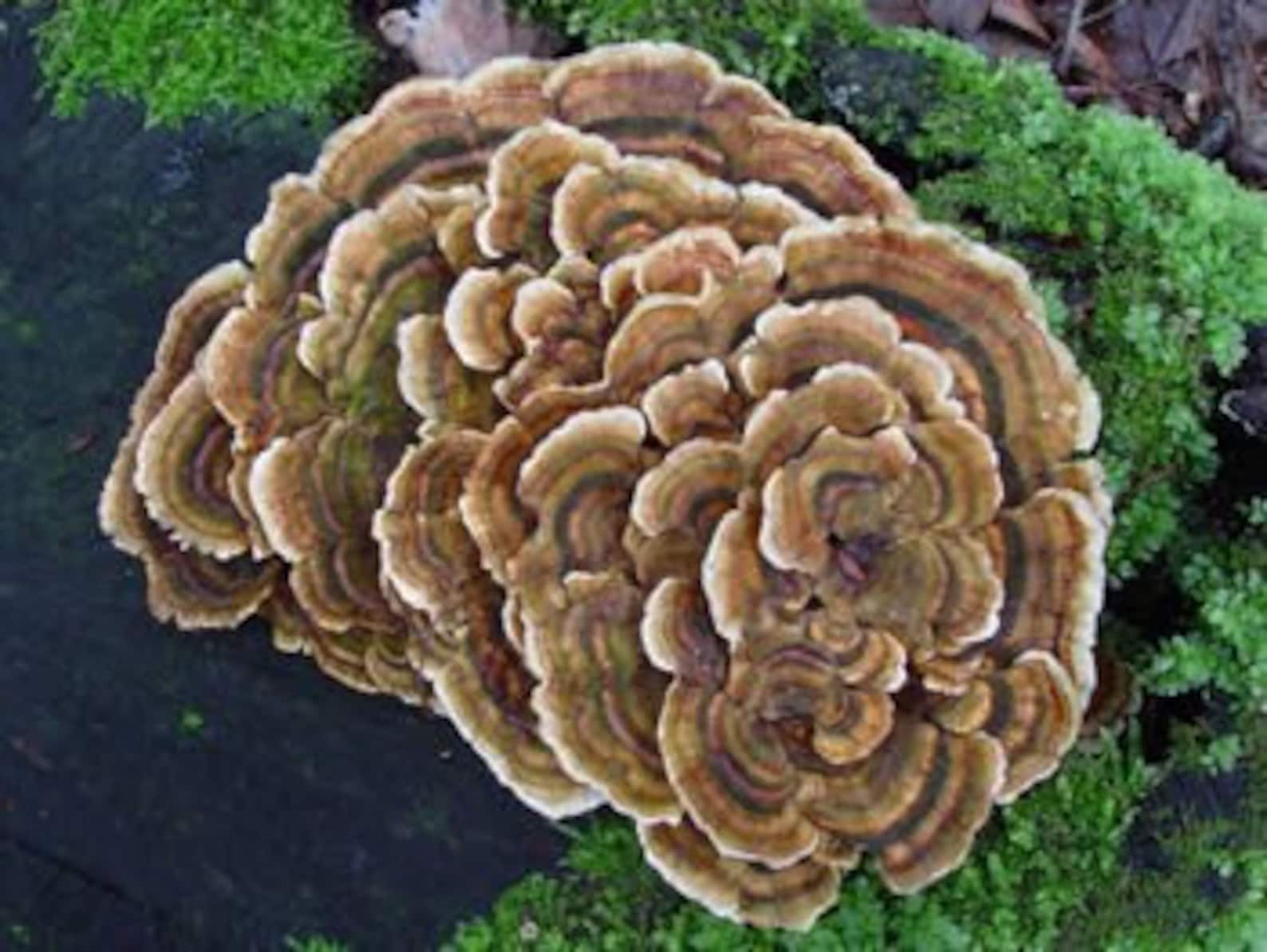
Turkey Tail Mushroom Home Grow Kit Etsy Canada
The Turkey Tail mushroom is, to date, the first medicinal mushroom that the FDA has funded for research in the fight against various types of cancer. Research shows that turkey tail mushrooms can help slow the spread of cancer cells, and when used in tandem with other traditional cancer treatments, improves survival rates. Full List of Ingredients

Turkey Tail Mushroom Benefits, Side Effects, Recipes & Dosage
To answer your immediate question, the mushroom you've found is not a turkey tail (Trametes versicolor). Although quite similar-looking, turkey tails are usually more colorful, somewhat gregarious (growing in large overlapping groups), and are thin-fleshed with a leathery texture.

The Amazing Properties of Turkey Tail Mushrooms Dr. Dov Pine
stump puffball 11. Lycoperdon pyriforme. Blewit 12. Lepista nuda. Wine-cap Stropharia 13. Stropharia rugosoannulata. Black Trumpet 1. Craterellus cornucopioides. lobster mushroom 14.
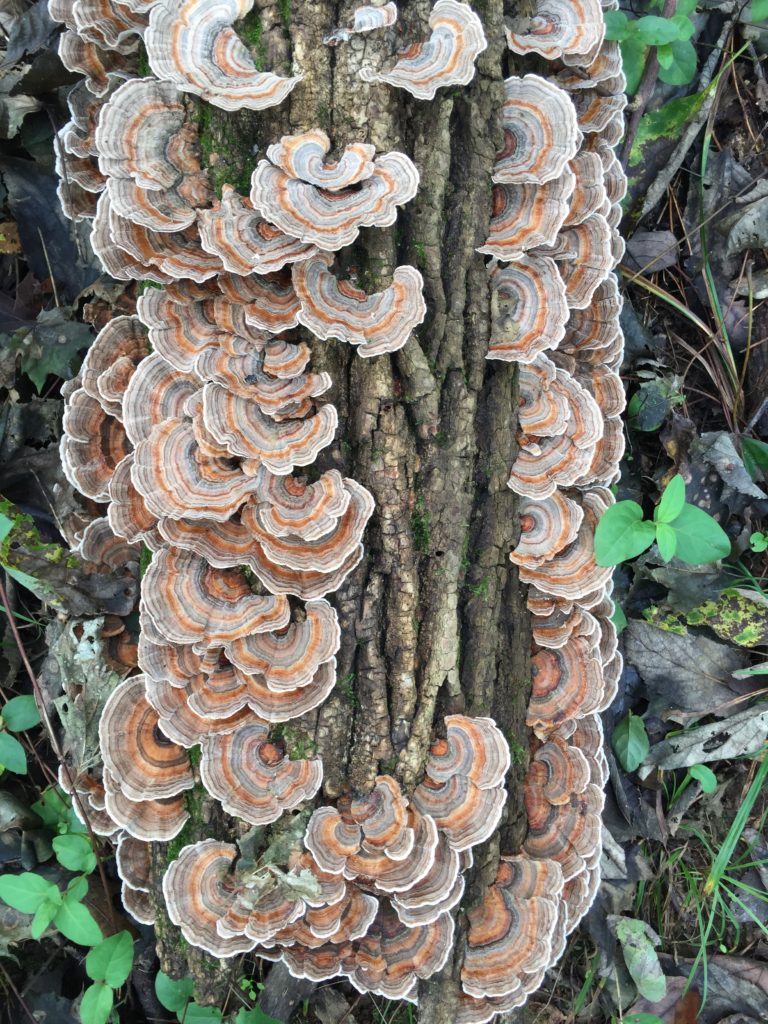
Turkey Tail Mushroom Tonic Herb Shop
Turkey tail mushrooms are a polypore, meaning that it has pores on the underside like several other medicinal mushrooms including reishi and tinder polypore . The closest look alike are types of crust fungus, namely Stereum ostrae . They look enough alike that these actually go by the common name "false turkey tail."

Turkey Tails in Ontario Canada mushrooms fungi nature photography
Old-man-of-the-woods 9. Strobilomyces strobilaceus. Cornflower Bolete 10. Gyroporus cyanescens. Russell's Bolete 11. Aureoboletus russellii. Purple-veiled Slippery Jack 9. Suillus luteus. Chicken Fat Mushroom 12.

A Complete Guide to Turkey Tail Mushrooms GroCycle
Summary 2 Trametes versicolor - also known as Coriolus versicolor and Polyporus versicolor - is a common polypore mushroom found throughout the world.Meaning 'of several colours', versicolor reliably describes this fungus that displays different colors. For example, because its shape and multiple colors are similar to those of a wild turkey, T. versicolor is commonly called turkey tail.